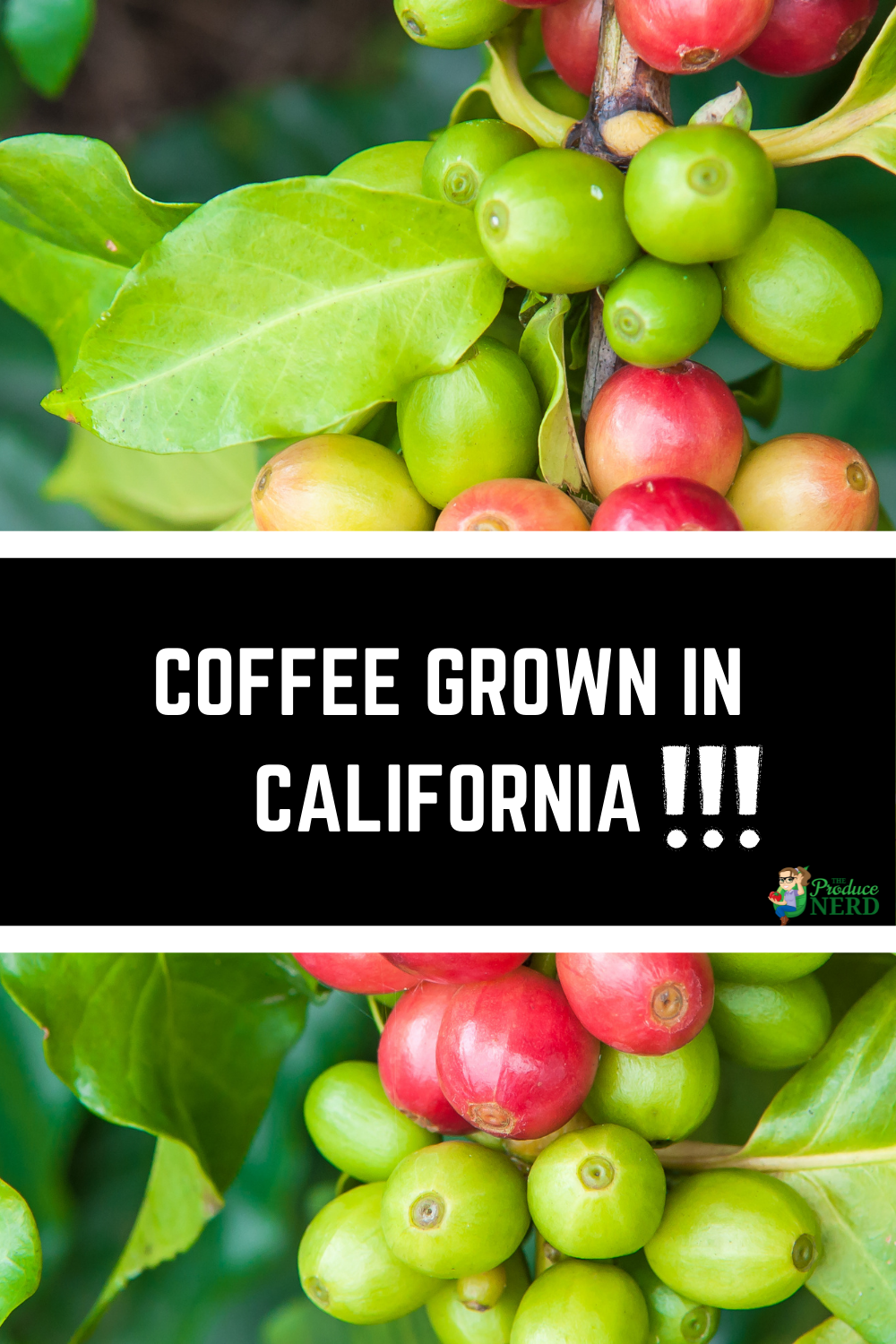Yes, you read that right! Coffee is successfully being grown in California. Good Land Organics, in Santa Barbara, California, was the first growing operation in California to successfully grow coffee and now there are other operations throughout California that are joining in, from Morro Bay (Central Coast) to San Diego (Southern Coast). I was able to tag along with coffee lovers and hopeful future growers on an educational tour that used to offered to the general public.
Table of Contents
Coffee Grown in California
As coffee is normally grown in the tropics, there are differences in the growing process that need to be recognized. For example, they do not commonly irrigate (if they do, it is drip irrigation) or fertigate (where they add fertilizer into the irrigation stream) in the tropics. There are also new natural occurrences that the coffee trees experience in California that they are not used to, such as the introduction of salts in the soil (resulting from the drought), wind, etc. As a result, Good Land Organics worked with UC Davis to genome the coffee plant so that they can label the coffee beans appropriately and will be able to tell how the same variety differs between the tropics and California.
Good Land Organics hopes that coffee growing and processing will be the next wine industry in California, with the use of different varieties to produce different flavored coffee. They have currently gotten other growers on board and they are all growing Arabica varieties, which produce specialty coffee.
How is Coffee Grown
How Coffee Trees Develop
It takes 2-3 weeks for coffee seeds to germinate. Then, it will take the coffee trees between 3-5 years to fully develop, which is also when fruiting starts.
What is a Coffee Fruit (Coffee Cherry)?
Coffee fruit is referred to as a cherry. The cherry consists of 2 seeds. It takes the tree 10-12 months to form a cherry.
Flowering occurs between June and July each year, and then the trees are harvested 10-12 months later. It is rare to have both flowers and fruit on the tree at the same time, but it does occur here. We were even able to catch a glimpse of this on the tour! The fruit grows on the inside portion of the branches, while the flowers grow on the outer part.
How do Coffee Cherries Ripen?
When the cherries ripen, they go from a yellow to green color, then red to burgundy. They are harvested at the burgundy stage for optimum ripeness. Since it is common for there to be cherries of different maturities on each tree, the trees are harvested multiple times.
Coffee Processing Postharvest
- Pulping the Cherries – After harvest, the cherries are pulped to separate the seeds from the fruit skin, as the seeds are the desirable portion of the fruit.
- Fermenting the Seeds – There are different methods for fermenting coffee seeds, but Good Land Organics uses the “washed” method, where the seeds are fermented in liquid to separate the seed from the mucilage. The bad seeds float and are removed.
- Drying the Seeds – The seeds are placed outside to dry for 1-2 weeks. You can see if there are any black seeds during this process and remove them.
- Rest Period (REPOSO) – The coffee seeds go through a 2-3 month resting period prior to roasting and/or transit.
- Hulling – The parchment layer is removed and the product is ready to be sold.
- Packaging – Package the product to send.
Good Land Organics roasts onsite, and also sells the seeds wholesale to coffee shops and roasters who roast their own.
Alternative Uses for Coffee Byproducts
Current ways to reuse coffee byproducts include:
- Pulp Recycling – The pulp that is removed during the pulping of the cherries (step 1 above) can be used to make coffee flour, coffee extract, coffee flower tea, etc.
- Tree Wood – Dead tree wood can be repurposed and used by woodworkers.
Featured Grower Information
Good Land Organics grows coffee and other exotic fruit on their farm in Goleta, California (close to Santa Barbara). They were the first to get into coffee growing in California, and now have partnered with other growers to really bring California grown coffee to life, under the company FRINJ Coffee.
If you liked this post, you might also enjoy:
